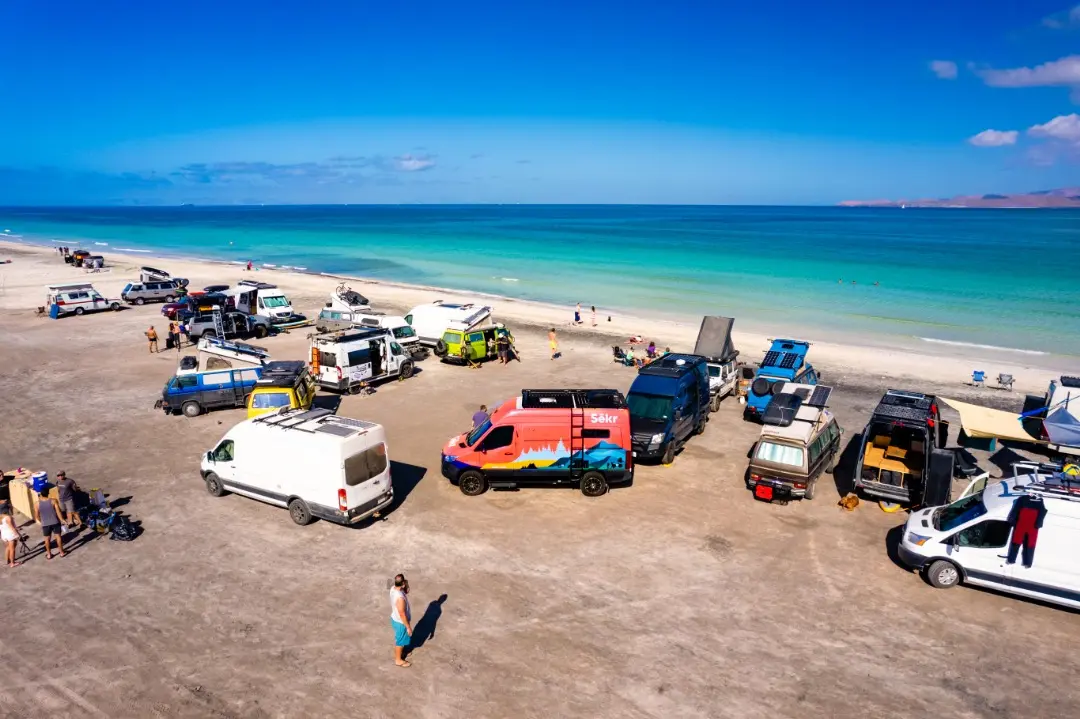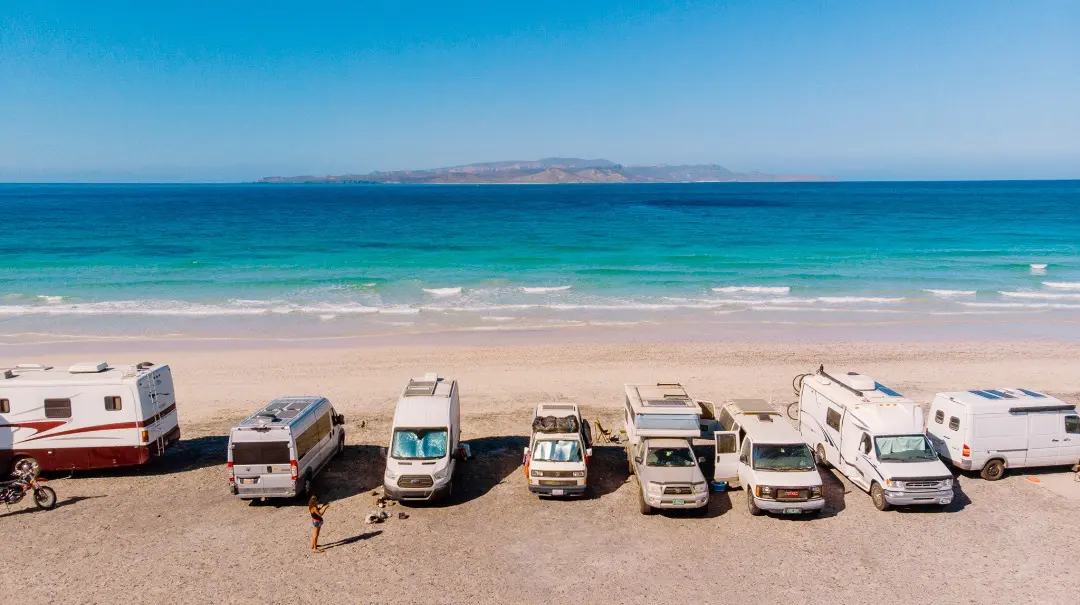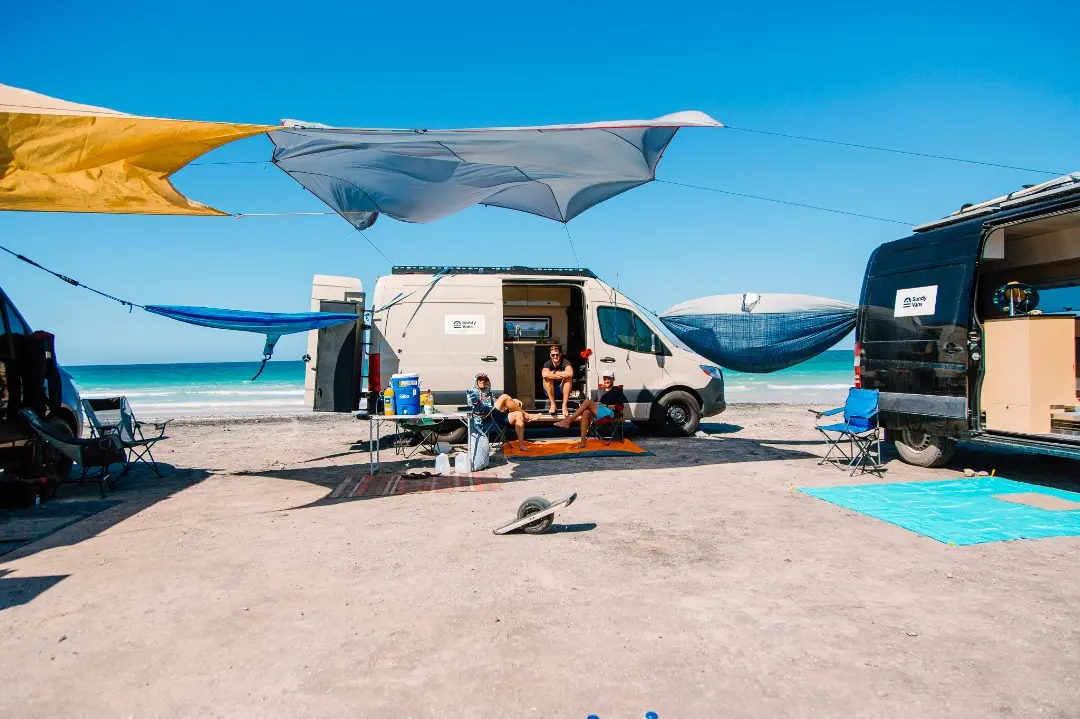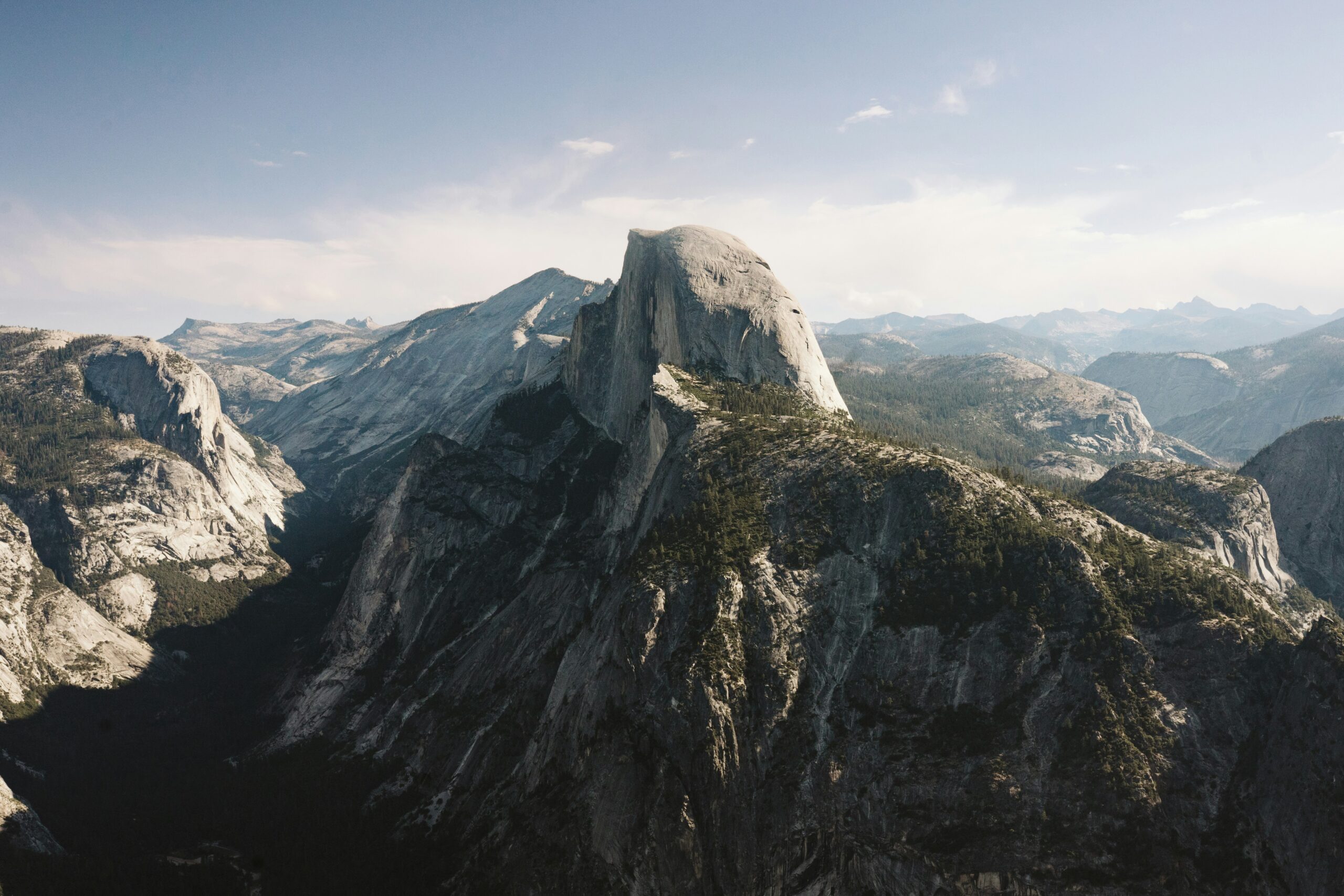¡Hola! acompañeros Vanlifers y campistas, ya llega la hora de empezar su adventura Baja.
Now don’t mind our Spanglish as we say welcome fellow vanlifers and campers, it is time for your Baja adventure to begin…but primero you must preparar for el journey. Here are our firsthand must-do’s and tips to get you properly prepared for an awesome adventure under the Baja sun and don’t forget Escapar a la Baja, the vanlife, and overlanding gathering outside La Paz!
Get Baja Ready in No Time

1. Passport and Legal Documents
Be sure to have your passport and legal documents in order. Make sure your passport is current and won’t expire during the time you plan to be in Mexico. It’s also a good idea to carry proof of ownership of your vehicle.
2. FMM Tourist Card
If you’re going to be in Mexico for longer than 7 days, then you need an FMM Tourist Card. You can apply for it online here. After applying, you’ll be directed to the Banjercito website to pay for the card. It costs around $28. Print out both the Tourist Card and the Banjercito receipt. (Click Descargar y Imprimir to download and print the whole receipt). Once you cross the border, head to a Centro Integral de Servicios office to have your Tourist Card stamped. There is one located immediately after crossing the Tijuana border and also one in Ensenada (address below). We recommend using the office in Ensenada, there’s typically no wait and that means you don’t have to stop in Tijuana if you don’t want to. Plus, you can find one of our favorite taco shops nearby!
Note: you are NOT required to apply for your tourist card in advance, you can simply walk into the Centro Integral de Servicios office, fill out the paperwork and pay the fee. Be wary of websites charging a high fee to apply online, the FMM card costs $28-$30 USD, no more.
El Recinto Portuario
Centro Integral de Servicios
Av. Teniente José Azueta 106, Zona Centro, 22800 Ensenada, B.C., Mexico
GPS: (31.861080, -116.630820)3. Mexican Auto Insurance
Your home country’s insurance policy is not valid in Mexico. You must have Mexican auto insurance. Make sure you get insurance with third-party liability. We went with Baja Bound, It’s a bit pricey but you’ll be guaranteed to be covered in all aspects of an emergency or accident. Make sure towing and roadside assistance are included, your AAA membership will do you no good south of the border.
4. Inform Your Banks and Credit Card Companies of Your Travel Plans
A sudden charge on your account made in Mexico may look suspicious to your bank and cause them to place your account on hold. Avoid any inconvenience by informing your bank and your credit card companies of your travel plans ahead of time, especially if you plan to use a debit/credit card in Mexico.
5. Oil Change/Tune-Up
When was the last time you had an oil change? Consider getting/doing a tune-up and oil change before you cross the border.
6. Tires vs. Sand Prep
There are a lot of dirt and sandy roads in Baja. If you don’t have a 4×4, It’s a good possibility that your vehicle will get stuck in the sand. Prepare accordingly by having tread to go underneath your tires and a tool to deflate/inflate tire pressure. (Pressuring down helps the tire grip soft sand and helps handle rocky terrain). Carry a tow strap as well in case you really get stuck and need to be pulled out.
We’ve been stuck in the sand a couple of times and the tread came in handy. We don’t have a tool to lower tire pressure and we really wish we did because it would have helped immensely. Learn from us and be prepared!
7. Changing Money (Cash or Credit)
Most places in Baja accept credit cards, but many do not, especially in more remote areas. Cash is king, so make sure you carry plenty with you. Most places will accept US dollars but be warned, that you will get a poor exchange rate. Do yourself a favor and exchange your USD for Pesos. There are MANY places to change money when you cross the border, and they’re easy to find. Again, we recommend exchanging your money in Ensenada before you get too far south. ATMs are a good option too, as you typically get the best exchange rate, though you will likely have to pay a fee both at the ATM and with your home bank.
8. Diesel/Gas Fuel Availability and Quality
Fuel stations are full service. Most will take a credit card but some only take cash.
Gasoline is a red, green, or grey pump. Diesel will be the black pump. Ask the attendant “Lleno con __________ (gasolina or diesel), por favor” if you want a full tank! Tip the attendant 20-50 pesos. ($1.20-$2.50)
There is a long “fuel gap” on route 1 between El Rosario and Guerrero Negro. Be sure to fill up (even if your tank is half full) before leaving El Rosario as there are no fuel stations until Guerrero Negro. If you have a small tank, it’s a good idea to carry a spare container of fuel.
While diesel fuel is readily available in Baja, it isn’t always of the same quality we enjoy in the USA. Consider purchasing a diesel fuel additive to make the switch easier on your vehicle. We went with the Lucas brand. We just add a little bit with each fill-up.
If you’re worried about the gas quality, Lucas brand fuel additive also works for gasoline!
9. Traveling with Pets
Make sure your pet is current with their vaccinations and carry a copy of their vaccination certificate with you. If your pet has any special diet or medication needs, be sure to plan ahead and bring everything they’ll need with you. Getting into Mexico with your pet won’t be a problem, but you will need all the proper paperwork when you cross back into the US. Baja Bound has a good FAQ on the subject.
Note: Our dog, Bear, actually got a wound and infection since we’ve been here and we are happy to report that the Vet we went to in San Jose del Cabo was excellent and inexpensive. Bear is healed and happy!
10. Medical Needs
If you take prescription medication, bring enough for the duration of your stay. While there is plenty of farmacias in Baja that sell over-the-counter medicines (cough, painkiller, etc…), they may not have what you need.
11. Special Diet Needs and Food Shopping
For the most part, you won’t have trouble finding food in Baja. Big cities (Ensenada, La Paz, los Cabos) will have large grocery stores with lots of options while small towns will have mercados with limited selections. In between Ensenada and La Paz are mostly small towns. We wish we had stocked up on produce in Ensenada before we made that drive towards La Paz!
If you have special dietary needs, i.e. vegan/gluten-free/etc… plan ahead and stock up in the big cities.
Be mindful of carrying food in your vehicle when you cross back into the US. Many fruits and vegetables, including avocados and sweet potatoes, are not allowed to be brought from Mexico. Read the signs at border crossing and be sure to declare EVERYTHING. You can be fined for each prohibited item you fail to declare.

Border Crossing And Military Checkpoints: What To Expect
Border Crossing:
It is helpful to know a little bit of Spanish. Learn how to say where you are from, where you are going and the reason (vacation = vacaciones) There are lots of helpful apps for this: iTranslate, Duolingo, etc…
If you don’t understand what someone is asking you, smile and say politely “no comprendo, no hablo mucho español.” (I don’t understand, I don’t speak much Spanish) If you have any difficulty or frustrations, remember, a smile is a universal language and may reward you with better treatment.
If you’re driving a bigger vehicle across the border, it’s likely that you’ll be waved over for a search or scan.
Have your doors unlocked and ready to be opened. If your vehicle has quirks (ie: door or lock problems) , notify a border agent and learn how to say this in Spanish.
Don’t be surprised if they don’t check your passports or papers at all. It all depends on the border agents working at the time.
Our personal experience with the Tijuana border crossing was pretty easy except for the very last part. They didn’t look at passports once during the whole process. We were waved over for a search but before we could even open a door for them, they heard our dogs bark and directed us to a huge vehicle scanner. After the scan, we were directed to park in a small waiting area where we waited inside our van. A border agent came up to the back of our van and immediately pulled on the rear door handle. What he didn’t realize, and we didn’t have time to warn him, was that the door can only be opened from the inside and the handle was broken. He actually pulled the whole handle completely off the door! We found it a bit strange that he expected the door to be unlocked in the first place. He did apologize about the handle and helped us put it back together. He did not continue any kind of search and told us we were okay to continue into Mexico.
Military Checkpoints:
There are 6 military checkpoints on route 1 from Tijuana to los Cabos.
Generally, an officer will ask “De donde viene?” (Where are you coming from?), then “A donde van?” (Where are you going?) , then “por que?” Or “razón? (Reason?).
Sometimes after you answer, they will just wave you through and sometimes they will do a search. The intensity of the search varies depending on the checkpoint and/or officer. It could be that they only ask you to open the door and they peek inside. It’s possible that they ask you to step outside of the vehicle (with your pets if you have them) and they do a very thorough search with drug dogs.
We heard that the checkpoints are less intense when you’re headed south and more intense when you’re headed north. As of now we only have experience going south through all 6 checkpoints. Five of them were very easy with minimal search and 1 was super intense with drug dogs involved.
Road Conditions and Driving Tips:
You may have heard that, as a general rule, you shouldn’t drive at night in Mexico. This is a good idea, mainly because of the numerous potholes and unannounced “topes”. Topes are speed bumps and are generally found in cities and on the highway when approaching towns. They are often not accompanied by signage. They can be difficult to see at night and would cause damage to your vehicle if you come across one at full speed.
Driving during the day will allow you to see the potholes and speed bumps in advance.
Many of the beaches are accessible only by dirt or sand roads. The conditions of these roads vary. Some are fine for 2WD and some are 4×4 only. If you’re unsure of the road condition and worry about getting stuck, walk the road first!

So, there you have it nomads! We truly hope this helps ease your mind of what to expect while road tripping to Baja. We are astounded by the jaw-dropping oceanside views and camps, the vast desert plains, the humble and authentic roadside taquerias and mercados, and the colorful spirit of Baja’s people and culture. We hope you experience the same grand adventure and if you needs to find quality campsites along the way, look no further than Sēkr and be sure to join us for our upcoming trip Back to Baja!
Join us at the ultimate vanlife festival just a few hours south of the border!
This event is for the adventure enthusiast looking for a unique destination to gather for unique experiences, music, sport, local food and an unforgettable time.
Take the journey south in your van, RV, motorcycle or anything on wheels. All are welcome! You can even bring a tent to camp and lay underneath the stars; the choice is yours. No matter your transportation or sleep style, you’ll be in good company!


